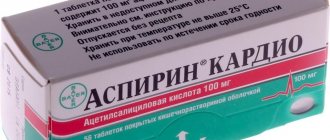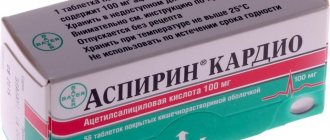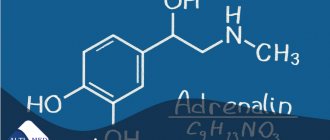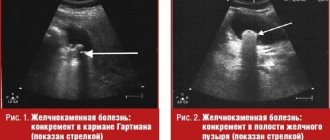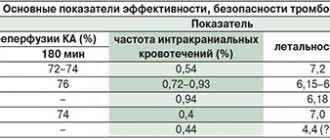In medicine, dyslipidemia is a deviation from the norm in fat metabolism. In the development of diseases, both their increase and decrease are important. Some obese patients mistakenly refer to their obesity by this term.
Fat masses deposited under the skin do not dissolve in the blood. And in case of abnormal metabolism, tests can determine excesses, deficiencies or an abnormal ratio of fat complexes associated with proteins (lipoproteins). In this state, they are produced by the liver or formed from foods ingested with food using special enzymes.
According to leading cardiologists, atherogenic dyslipidemia is of great importance. This is a type of abnormal changes in the composition of lipoproteins, which is one of the damaging factors of the vascular wall. By the nature of the relationship, experts judge the degree of risk in the development of atherosclerosis.
Timely correction of glucose levels helps prevent the early occurrence of serious complications of the disease - myocardial infarction and stroke.
And therefore, reduce the likelihood of death and prolong a person’s active life.
By what indicators can one judge about impaired fat metabolism?
The mechanisms of dyslipidemia often remain unknown. In the laboratory, the main indicators that are directly involved in assimilation and production are identified.
Lipoproteins are complexes of proteins combined with fats, the only way fat molecules can dissolve in liquid.
The condition of the liver cells directly affects the production and circulation of fat components
Based on density they are distinguished:
- high - lipoprotein compounds are carried freely, without settling in the walls of the arteries, they are processed into cholesterol in the liver, enter the gall bladder and ducts, then into the intestines and participate in motility, ensuring the release of the body from toxins;
- low - needed for the delivery of cholesterol into cells for the purpose of “construction” and participation in the synthesis of vitamins and hormones, along the way they lose cholesterol in the form of atherosclerotic deposits in the inner wall of the vessel, in places where there is damage caused by viruses;
- a fraction of “very low” density and its predecessor “intermediate density” were isolated - they play an even more negative role in vascular damage.
Triglycerides give the body energy. They themselves are not deposited as part of the atherosclerotic plaque, but they affect the decrease in the activity of the high-density fraction of lipoproteins, so the increase in triglycerides contributes to the atherosclerotic process.
To more fully take into account the balance of the influence of fat metabolism indicators on the risk of arterial damage, the calculation of the atherogenicity coefficient has been adopted by determining the ratio of “negative” fractions to high-density lipoproteins.
Dyslipidemia in diagnosis is indicated by elevated blood test values:
- total cholesterol - over 6.2 mmol/l;
- low-density lipoproteins - 4.1 mmol/l and above;
- triglycerides - exceeding 2.3 mmol/l.
In this case, the atherogenic coefficient is more than 3.0.
Types of hyperlipidemia
The classification of hyperlipidemia is based on LDL, HDL, and triglycerides.
The concentration of lipoproteins is measured: Low density - LDL, VLDL, TG;
- High density HDL.
It is cholesterol that has a low density that is considered “bad”. It forms plaques and creates a risk of developing vascular pathology. It is important for the doctor to achieve a reduction in LDL cholesterol. However, total cholesterol levels may remain slightly elevated.
In total, there are 6 types of hyperlipedemia. Three of them are considered dangerous: 2a, 2b and 3. They are dangerous because they threaten the formation of dense plaques.
Type 2 is considered common. It is divided into 2a and 2b. With 2a, an increase in LPN and total cholesterol is observed. 2b – all factions are increased.
*Note: 4 and 5 can also be atherogenic with low HDL and other metabolic disorders.
Types of dyslipidemia
According to the international statistical classification of diseases ICD-10, dyslipidemia is classified as metabolic disorders with code E78. In practical work, doctors are recommended to classify dyslipidemias, adopted by the WHO (World Health Organization), authored by Donald Fredrickson.
Quite a long time has passed since its approval (1965). Many scientists point out obvious shortcomings:
- lack of modern data on the role of high-density lipoproteins;
- development of only elevated indicators (hyperlipidemia), although low-fat abnormalities are also important in pathology.
However, Fredrickson typing includes the following features:
- influence of hereditary factors;
- the presence of an enzyme base in the intestines for processing fats;
- cause-and-effect relationship with diseases.
There are causes of dyslipidemia that can be managed
There are 5 types of dyslipidemia: Type 1 - lipid metabolism disorders associated with a lack of enzymes necessary for the breakdown of fatty compounds in the intestine. Manifested by an increase in the level of chylomicrons in the blood. This is a transport form of fats for delivery from the intestines to the liver. There is no evidence of an effect on the development of atherosclerosis. Rarely occurs in 0.1% of the population.
Type 2 is divided into subtypes:
- 2a - develops under the influence of gene mutations, but external factors are also important. Levels of low-density lipoproteins and cholesterol are increased. It occurs most often in 0.2% of the population and accompanies the early manifestation of atherosclerosis and the diseases caused by it.
- 2b - in contrast to subtype 2a, it involves an increase in triglycerides and very low density lipoproteins, present in every tenth adult. The reasons are considered to be an increase in their synthesis in the liver and delayed excretion. This group includes hereditary combined hyperlipidemia and secondary hyperlipidemia that develops in the general metabolic syndrome.
Type 3 is hereditary, rarely found in 0.02% of the population, the lipogram shows an increase in the concentration of intermediate-density lipoproteins, which appear as a result of the breakdown of very low-density compounds, and at the same time the number of chylomicrons in the blood increases.
Type 4 - characterized by a simultaneous increase in triglycerides and low-density lipoproteins, found in 1% of people.
Type 5 - refers to genetically determined, often the origin is unknown, accompanied by reduced activity of the lipase enzyme. Increased concentration of chylomicrons and very low density lipoproteins, similar to type 1.
Dyslipidemia - symptoms and treatment
The prognosis of DL depends on the form and severity of the syndrome, the degree of development of atherosclerosis and the presence of atherosclerosis-related diseases.
Prevention of DL is based on behavioral measures.
A balanced diet can reduce LDL by only up to 20%, but the effect of diet on TG and VLDL is noted. In addition, a healthy diet is a significant factor in reducing overall mortality.
The amount of calories consumed from food should help maintain normal body weight. In this regard, it is recommended to limit the consumption of animal fats (no more than 10%), and the total amount of fat should not exceed 20-30% of the total daily caloric intake. The daily intake of cholesterol from food should not exceed 300 mg in persons without DL and atherosclerosis, and in the presence of these conditions - no more than 200 mg.
It is important to reduce your intake of saturated fat and not overemphasize the importance of limiting certain fatty foods, such as eggs, as they are a valuable source of many nutrients. Particularly atherogenic saturated fats are trans fats found in hard margarines and processed foods.[9][13]
Fruits and vegetables (not counting potatoes) should be consumed at least 400-500 g per day. The consumption of meat products, offal and red meat should be limited. It is better to eat more other protein foods: legumes, fish or poultry. Every day you need to consume dairy products low in fat and salt (kefir, sour milk, cheese, yogurt).
Simple sugars are needed in daily food, but their share should not exceed 10% of the total calorie intake. The total amount of salt consumed, including salt contained in prepared foods, should not exceed 5 g per day, this is especially important for people with arterial hypertension.
It is useful to eat deep-sea fish from the northern seas (selfish, sardines, mackerel, salmon) at least 2-3 times a week. This is due to the high content of ω-3 PUFAs in these varieties, which help prevent atherosclerosis. Plant sterols/stanols are found in plant seeds, nuts and vegetable oils. In doses of about 2 g per day, they do not allow cholesterol to be absorbed in the intestine.[2][4]
Reducing excess weight is a prerequisite for the prevention of DL and cardiovascular complications. Reducing body weight is achieved by prescribing a low-calorie diet and regular adequate physical activity. For anthropometric assessment, the body mass index (BMI) = weight in kg/height m2 should be used. Normal BMI is 18.5-25 kg/m2. Waist circumference (WC) is measured to assess the type of obesity. The normal WC in men is no more than 94 cm, in women – no more than 80 cm. WC over 102 cm in men and 88 cm in women is an indicator of abdominal obesity, which is associated with an increased risk of cardiovascular complications.[15]
All patients with DL, excess body weight and other risk factors are recommended to increase daily physical activity, taking into account age, fitness and existing diseases. The most physiological, safe and accessible aerobic physical exercise for everyone is walking. It is recommended to do it 5-6 times a week for at least 30-45 minutes, achieving a heart rate of 60-75% of the maximum for a person. The maximum heart rate is calculated using the formula: 220 – age (years). People with coronary artery disease and other diseases of the cardiovascular system should develop an individual training regimen, taking into account the performance of a stress test (bicycle ergometer or treadmill).[2][3]
Physical training is an important component of the prevention of DL. They reduce heart rate and blood pressure, allow adaptation to ischemic conditions, stabilize hormonal levels and tissue oxygenation. Aerobic, dynamic, cyclic loads of adequate intensity are more effective - walking, hiking, swimming, skiing and cycling.
It is important to quit smoking in any form, including passive smoking. The smoking cessation program algorithm consists of several principles:
- identification of smokers;
- assessment of the severity of the habit and readiness to get rid of it;
- an explanation of the dangers of smoking and a recommendation to quit it;
- if necessary, medical assistance, including complex therapy;
- Regular monitoring of a smoking patient by a doctor.
The most effective medication for quitting smoking is varenicline (Champix). It is a blocker of nicotinic receptors in the brain, as a result of which the craving for smoking is suppressed, the pleasure from the process is reduced and withdrawal symptoms are reduced.
A number of studies have shown that moderate alcohol consumption can have a positive effect on DL. Drinking no more than 150 ml of alcohol per week for men and 100 ml for women is considered safe for health, subject to daily consumption of no more than 20 g for men and 15 g for women. However, any doses of alcohol are not recommended for people with arterial hypertension, hypertriglyceridemia, diseases of the hepato-biliary and pancreatic zone, gout and obesity. Alcohol abuse during statin therapy can lead to myopathy and rhabdomyolysis.[6]
Preventive statin therapy is also an effective way to prevent DL. For this purpose, low doses of modern statins are often used:
- simvastatin 10-20 mg per day;
- atorvastatin 10-20 mg per day;
- rosuvastatin 5-10 mg per day;
- pitavastatin 1-2 mg per day.
What factors accelerate the development of atherosclerosis?
Risk factors predisposing to atherosclerotic damage to elastic and mixed arteries are considered: causes that can be eliminated and independent of the individual.
Eliminated (modified) include:
- features of lifestyle, routine, habits - lack of sufficient mobility, smoking, addiction to alcohol, emotionality of experiences and behavior, resistance to stress, work on night shifts are important;
- type of diet - in families that accustom the child from childhood to fatty and high-calorie foods, those who like to eat a lot of fried meat, barbecue, there are more cases of acute diseases caused by atherosclerosis;
- High blood pressure in hypertensive patients should be monitored and treated;
- For patients with diabetes, there are recommendations for correcting blood glucose levels, using hypoglycemic agents, and a specially calculated diet.
Fat deposition in men with a waist size of 102 cm or more is considered critical.
Factors that a person cannot change include:
- your gender (men suffer more often);
- age (hereditary disorders appear already in children, secondary changes are more often observed after 40 years);
- genetic predisposition in cases of familial types of hyperlipidemia;
- consequences arising after a stroke or myocardial infarction.
In these cases, patients are prevented from possible or repeated complications of atherosclerosis. When choosing which doctor to treat, patients should not forget that dyslipidemia should be consulted with an endocrinologist.
What forms of pathology are accompanied by reduced indicators?
The standard classification does not include forms of hypolipidemia. They are more correctly called hypolipoproteinemia, since it is the protein-fat complexes that play the main role in the pathology. The prevalence among the population is very low (up to 0.01%), detected by chance during examination. There are:
- hypo-α (alpha) lipoproteinemia;
- hypo-β (beta) lipoproteinemia.
The diagnosis is confirmed by the detection of a reduced level of:
- total cholesterol to less than 3.1 mmol/l;
- low-density lipoproteins not more than 0.13 mmol/l.
The reasons are divided into:
- primary - hereditary metabolic disorders, genetically confirmed pathology expressed by clinical syndromes;
- secondary - caused by diseases such as thyrotoxicosis, blood diseases, chronic alcohol intoxication, neoplasms, long-term infections and inflammation.
Abetalipoproteinemia, or Bazin-Kornzweig syndrome, is diagnosed during examination of newborns with impaired intestinal absorption function, persistent diarrhea, steatorrhea (fat in the stool), and children with impaired growth and development.
The main role belongs to mutations of the protein involved in the transformation of triglycerides and the formation of chylomicrons. As a result, fats from food cannot be absorbed. Total cholesterol reaches 1.16 mmol/l, triglycerides - less than 0.23 mmol/l, and low-density lipoproteins are not detected at all.
In the clinic, deficiency of vitamins E, A, K and D is important, the synthesis of which is impossible without the fat part. The patient has:
- blurred vision to the point of complete blindness, damage to the retina in the form of retinitis pigmentosa;
- damage to nerve fibers and pathways in the brain and spinal cord, cerebellum with increased muscle tone, lack of coordination, paralysis;
- different forms of spinal curvature;
- muscle weakness.
The child is diagnosed with delayed mental and physical development and slurred speech.
Acanthocytosis of red blood cells (spike-like growths on the cell membrane) is observed in the blood smear.
A biopsy of the intestinal mucosa confirms the absence of the carrier protein.
Hypobetalipoproteinemia may be asymptomatic, and fat absorption is not impaired. The content of low-density lipoproteins in the blood is reduced, and the content of high-density lipoproteins is normal or increased. Triglycerides are moderately reduced.
Should dyslipidemia be treated?
Treatment of secondary dyslipidemia depends on the severity of the underlying pathology, the form of diabetes, and the possibility of drug-free correction of changes.
Hyperlipidemia begins to be treated with a restrictive diet. Animal fats (lard, fatty sour cream, sausages), baked goods, sweets, and high-fat dairy products are excluded from the foods consumed.
It is recommended to include lean poultry, veal, skim milk, hard cheeses, cereals, a lot of greens, fruits, and vegetables in your diet.
The use of a diet for hyperlipidemia type 2b is especially effective.
In case of hypolipidemia, the child is given a special diet. An adult's menu should contain enough vitamins, especially those containing vitamin E (vegetable oil from sunflower, corn, cotton, soybeans, flax, hemp), use only coarse cereals, and legumes.
Your doctor will help you choose medications to lower lipid levels. Currently used:
- statins,
- ion exchange resins,
- fibrates,
- polyunsaturated Omega-3 acids, which are obtained from fish muscle tissue.
Glucose compensation improves triglyceride and low-density lipoprotein concentrations
In the most common cases of type 2b hyperlipidemia, combinations of statins and fibrates are more effective. The risk of myopathy should be taken into account.
To correct metabolic disorders in hypolipidemic conditions, high dosages of vitamin E, Retinol capsules, vitamin D and K are prescribed. Supplements containing triglycerides can damage the liver. It is best for patients with hypolipidemia syndrome to consult an experienced nutritionist. The specialist will select all possible combinations of products.
Causes
- Heredity.
- Hypothyroidism is a dysfunction of the thyroid gland.
- Diabetes.
- Obstructive liver diseases.
- Taking diuretics, immunosuppressants and other medications.
- Increased content of animal fats in food.
Provoking factors include a sedentary lifestyle, cholesterol abuse, alcohol intake, smoking, and a stressful personality type. The sooner a patient at risk contacts a lipidologist, the higher his chances of avoiding complications.
Dyslipidemia in diabetes mellitus
The connection between metabolic disorders simultaneously in carbohydrate and fat metabolism is manifested in diabetes. Detection of dyslipidemia in a patient with diabetes mellitus can seriously worsen the prognosis of the disease.
The reasons are considered:
- uncompensated blood glucose levels;
- negative effects of certain medications (diuretics, beta blockers, antiviral drugs, antidepressants, cytostatics);
- concomitant hypothyroidism and obesity;
- hereditary burden.
The disease causes a change in the synthesizing and neutralizing function of liver cells by disrupting the formation of chylomicrons, inhibiting a number of necessary enzyme systems, and activating the supply of free fatty acids from adipose tissue reserves. The production of lipoproteins is very sensitive to the presence of insulin. The forms of dyslipidemia depend on the type of diabetes.
In treatment, endocrinologists must monitor the level of fat metabolism indicators. The prescription of drugs that affect the synthesis and excretion of cholesterol is indicated when the analysis numbers are elevated.
It is preferable to prescribe drugs to patients from the statin group, possibly in combination with fibrates.
What are the symptoms of lipidemia?
This abnormal accumulation of fat can begin during puberty, after pregnancy, or even during menopause.
Patients notice:
- Blood beta lipoproteins (LDL) - what is it and what is the norm in men and women.
- Soft tissue pain when resting, walking, or touching.
- Sudden accumulation of lipid-lowering fat from the waist to the knees or ankles other than the feet.
- Fat accumulates in nodules or small pockets that put pressure on the joints until it becomes impossible to walk normally.
- The skin loses its elasticity.
- Bruising and swelling occur.
A few months after this first stage, patients notice the following symptoms:
- Constant feeling of cold.
- Fatigue.
- The skin takes on a rubbery texture.
- Chronic pain and gradual deterioration in mobility.
Combined with an unattractive appearance, these symptoms cause feelings of sensation, anger, and sadness until depression develops.
